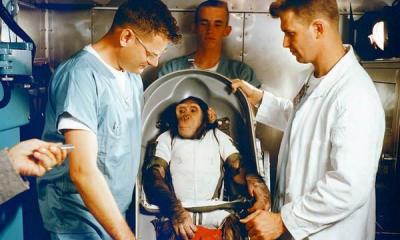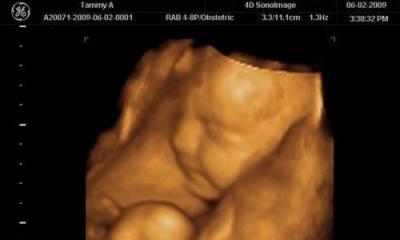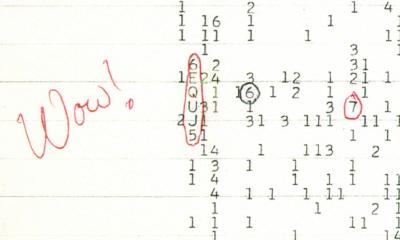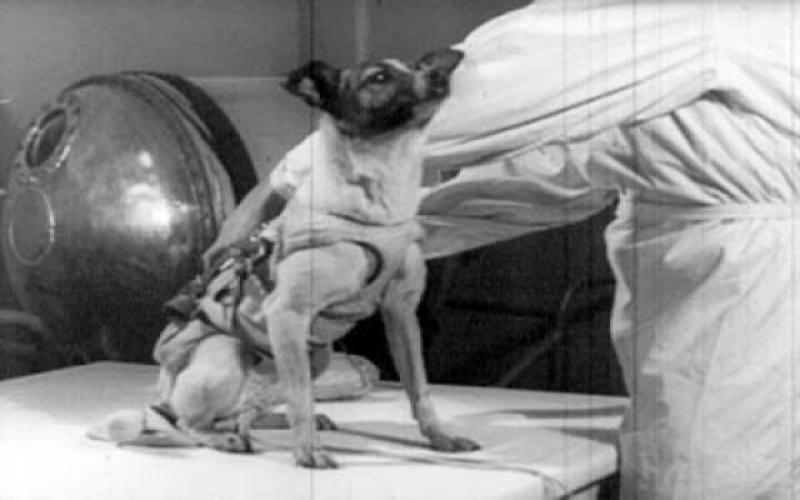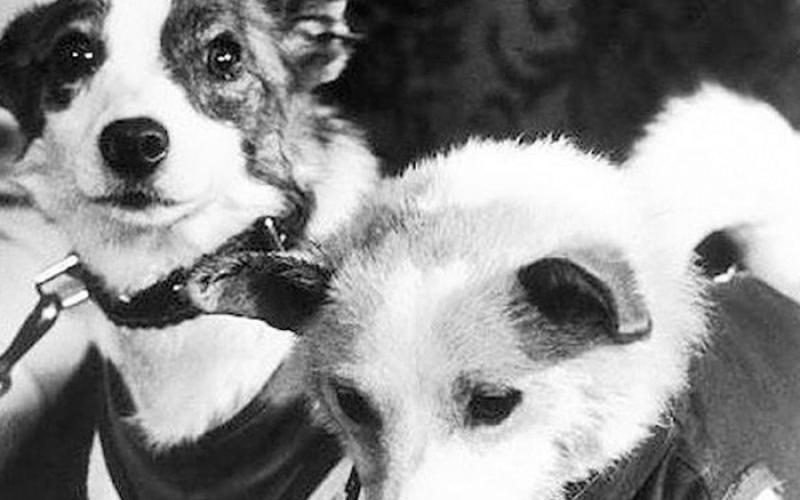The dog Laika, the first living creature to orbit the Earth, is our national hero. Her daring and tragic Sputnik 2 mission, when the dog became an unwitting pioneer of the USSR space program over 57 years ago, is stuck in our collective consciousness. Her story formed the basis of films and songs, was immortalized in monuments and memorable souvenirs. Here is an honest story of the first astronaut dogs in the world.
Laika is not the only astronaut dog to die during the Soviet space program; over a dozen other dogs had lost their lives before her. However, during the space race, fueled by the Cold War, and NASA in the United States sacrificed several monkeys, paved the way for people with their bones. However, a few Soviet space dogs survived and returned to a relatively normal life. Belka and Strelka, who went into space after Laika, landed successfully and became real living legends in the USSR. Laika, Belka, Strelka and other popular astronaut dogs symbolized the heroism of the Soviet Union: simple animals laid down their lives for the country's scientific achievements. Everything, from stamps and envelopes to children's toys, cigarette packs and candy jars, was full of images of these furry animals.
Damon Murray, co-founder of FUEL Design and Publishing in London, decided to create a book about the achievements of Soviet space dogs. He collected the images with the help of Olesya Turkina, a senior researcher at the Russian Museum, wrote the text and gave it to his business partner Stephen Sorrell for publishing. The result was a grandiose work about Soviet cosmonauts. We will share excerpts and images with you in this article. The questions asked by Collectors Weekly were answered by Damon Murray himself.

How did Soviet ideology influence the space program of the USSR?
Ideologically, socialism could not fail in any form; for this reason, the Soviet space program was kept tightly under wraps. It was extremely important to keep technological progress secret: both the USSR and the USA tried to hide from each other any events that were being prepared in secret, to “surprise”. This is what became known as the "space race".
Flights with dogs were supposed to determine the impact of space on living organisms. Until then, no living creature has experienced either takeoff into space and landing on Earth, or weightlessness. All this was carefully checked and studied by the scientists of the Soviet space program, they had to determine whether space flights were safe for humans.

Why did they choose dogs and not cats or monkeys?
Dogs have historically been guinea pigs in the USSR. Ivan Petrovich Pavlov studied the system of reflexes on them and achieved brilliant results. Monkeys, on the other hand, were considered more human-like in many ways. Dr. Oleg Gazenko, one of the chief scientists of the space program, even visited the circus to watch the famous Capellini monkeys; in fact, he convinced Gazenko that monkeys are very problematic creatures. They needed intensive training and numerous vaccinations, they were emotionally unstable. (And the cats did not tolerate the conditions of the flight, which was later confirmed during the French missions in 1963). It was decided that dogs would be the first astronauts.
On the streets near the space program's research center, the Institute of Aviation Medicine in Moscow, mongrels were selected. Stray dogs were considered more hardy than purebred dogs as they could take care of themselves on city streets. They were selected according to weight and size: no more than 6 kilograms and no more than 35 centimeters.

At the very beginning, the dogs were sent to an altitude of 100 kilometers above sea level, but not into orbit. What do we know about these suborbital missions?
Dezik and Gypsy became the first dogs to fly on a rocket on July 22, 1951. Scientists were delighted when the dogs returned safe and sound, running towards the landing capsule (although this was strictly prohibited), shouting “They are alive! Alive! They bark!" Even the head of the space program, Sergei Korolev, known as the Chief Designer, allowed himself to grab one of the dogs in his arms and be touched. A week later, Dezik died with another dog, Lisa, when their capsule's parachute failed to open.
The exact number of flights is still unknown, but it is estimated that more than 30 suborbital rockets were launched between July 1951 and November 1960. At least 15 dogs involved in these launches have died. One lucky man - Bobik - managed to escape right before the mission. He was replaced by another mongrel named ZIB - these were the initials for "Replacing the Disappeared Bobik".
What happened to the dogs after their missions?
After a successful mission, the dogs were generally used for propaganda purposes. For example, the dog Courageous got its name after the fourth mission. She survived many flights and became the main character in the popular children's book, "Tyapa, Borka and the Rocket" by Marta Baranova and Evgeny Veltistov. Some dogs were taken away by scientists who looked after them because there was a strong bond between humans and dogs. For example, after her last mission, the dog Zhulka (formerly Comet) went home to lead scientist Oleg Gazenko. She lived there for twelve happy years after that. Other dogs like Belka and Strelka lived the rest of their lives at the Institute of Aviation Medicine. They were not just dogs, they were the first living creatures in space, celebrities, and often appeared on television and radio.

These dogs were heroes of the USSR. They were valued and respected for their work for the benefit of the country, as well as humanity as a whole. Faith in progress and the ability to sacrifice for the sake of a common goal became the basis of personal and social heroism, forcing Soviet citizens to work miracles. For the sake of a great goal, it was possible not only to sacrifice oneself, but also other living beings, who also possessed such human qualities as courage and selflessness.
What did the scientists and engineers think about the dogs they worked with?
Differently. There are many different examples of how scientists treated their charges. One day, when the Chief Designer found the dog food bowls empty, he sent the guard to jail. Perhaps this is a legend. The same Chief Designer, Sergei Korolev, before the flight of the astronaut dog Lisichka whispered in her ear: “Most of all, I want you to return safely.” The fox died. Due to the secrecy surrounding the program, it was inconceivable that four-legged heroes would receive a lavish funeral. Therefore, scientists could not indulge in mourning. But there were exceptions. In 1955, after the death of his beloved dog Lisa-2, Alexander Dmitrievich Seryapin, an employee of the Institute of Aviation Medicine, broke the rules and buried her remains in the steppe, even secretly taking a picture as a keepsake.
Commenting on the death of Laika in Sputnik 2, one of the leading scientists Oleg Gazenko stated that “working with animals is a source of suffering for all of us. We treat them like babies who cannot speak. The more time passes, the more I regret it. We shouldn't have done this. We didn't learn enough on this mission to justify the dog's death."
How did these dogs eat and urinate on board?
The problem of feeding dogs in zero gravity was solved by combining nutrients with agar-agar, a jelly-like substance. This "jelly" could be easily consumed and waste was kept to a minimum. It was more difficult for the dogs to find a convenient way to relieve themselves in such unusual conditions. Although their costumes had special receptacles for urine and feces, it was quite difficult to train the dogs to use them. They preferred to relieve themselves outside, but certainly not indoors, not in a cabin, and, of course, not in a suit. This process was unnatural for dogs, and only those who adapted to it were selected. Only knots were selected for orbital flights, they were more suitable for space, since they did not have to stick out their hind legs.
When and why did the USSR start publicizing experiments with space dogs?
Kozyavka, Linda and Malyshka became the first dogs whose names were declassified and presented to the public in June 1957. They visited the uppermost layers of the atmosphere at an altitude of 110 kilometers above the Earth. The next step for the Soviet space program was the first orbital flight with a living being: Laika.

The Soviet ideological machine used every opportunity to demonstrate that after flying these dogs could give birth to healthy puppies. This was proof that they hadn't been harmed by the adventure - it was essential to getting a man into space. One of Strelka's puppies (named Pushkin) was even given as a gift to President John F. Kennedy by Nikita Sergeevich Khrushchev. Fearing that the Russians had found a secret way to plant a bug in the puppy, they carefully examined and scanned it before handing it over to the presidential family.
What selection did Laika go through to become the first dog in orbit?
Laika was chosen because during her pre-flight training, she demonstrated exceptional endurance and tolerance. These were remarkable characteristics for a martyr in the name of humanity. In addition, she was a bright dog, light with dark brown spots on her muzzle that created a surprised expression. Her image was well reproduced in black and white photographs and film frames. This was an important factor as the launch was historically significant and carefully recorded.

Why was Laika sent into space without knowing how to save her?
The ideology of the space race meant that there was no time left to develop a recovery system before sending Laika into space. After the sensational launch of Sputnik 1 on October 4, 1957, Khrushchev told scientists that another satellite should be launched in honor of the rapidly approaching fortieth anniversary of the October Revolution, on November 7, 1957. Sputnik 2 was prepared in a terrible hurry.
What was the reaction of the world to Laika's flight and death?
Laika's flight evoked unprecedented love and compassion both in the USSR and in the rest of the world. People felt genuine sympathy for Laika. She was perceived as an innocent victim caught in the brutal millstone of the Cold War. Soviet children were told the story of Laika as the heroic creature that she, in principle, was: a kind and intelligent dog who went into space. For adults, her fate resembled their own. No wonder that on the bas-relief "To the Conquerors of Space", erected in Moscow in 1964, the image of Laika appeared next to the images of nameless engineers and scientists whose identities have not been established.
What did the apparatus of the USSR say about the death of the dog, and when did the truth become known?
After the initial excitement that followed the launch of Sputnik 2, the government needed to explain to the rest of the world why Laika would never return. She was officially "alive" for seven days, with newspapers periodically publishing reports on her health. This period was followed by the claim that the dog lived in orbit for a week and during that time served as a source of invaluable data on the possibility of life in space. She was then painlessly euthanized. There were several explanations for her death. First, euthanasia was introduced remotely. Secondly, euthanasia was introduced with food. Thirdly, on the eighth day she ran out of oxygen.

In reality, due to an error in the calculation of thermal conductivity, Laika suffocated just a few hours after launch. This fact was revealed only in 2002. In the 1950s, the international press accused the Soviet regime of being totalitarian and inhumane and suggested sending Khrushchev into orbit. In response, the Soviet press wrote about the hypocrisy of capitalist morality, the exploitation of entire peoples in the colonies, and racism. Despite all the arguments, Soviet ideology faced a serious dilemma. Since it was impossible to deny Laika's death, the only viable option left was to memorialize her.

By the time Belka and Strelka flew, what changes had been made?
Their capsule was equipped with a camera that transmitted images in real time from space to Earth. After the landing of Belka and Strelka, a documentary was released about the preparations for the flight, including live broadcasting from space. The whole world watched as Strelka merrily circled in weightlessness while Belka calmly watched.
The children's story "The Adventures of Belka and Strelka" accurately describes how dogs were trained to wear tight-fitting suits fastened with wires. They courageously endured cold and heat in the training capsule, got used to sitting in a cramped module for several days, where they could not walk, only sit or lie down. Inside the same module, they learned to eat jelly-like food supplied by an automatic dispenser. They rode the carousel and learned to tolerate the noise of the rocket by listening to it on tape. They were seated on a vibrating table and forced to sleep in a brightly lit room. They even flew on an airplane. But the most serious test for the dogs was the ejection seat, from which they suddenly flew into space and landed on a parachute.
Initially, this mission was to be performed by Chaika and Chanterelle. But they tragically died on July 28, 1960, when their rocket exploded on the launch pad. They were the best and favorite dogs in the institute. Junior researcher Lyudmila Radkevich later recalled how bright and wonderful they were, especially Chanterelle. Later, it was believed that sending red dogs into space was a bad omen.

What was the flight of Belka and Strelka like?
The launch of the rocket with Belka and Strelka took place on August 19, 1960 at 15:44:06. Together with Belka and Strelka, a container with twelve mice, insects, plants, mushroom cultures, various microbes, wheat, pea, onion and corn sprouts went flying. In addition, there were twenty-eight laboratory mice and two white rats in the cockpit.
Only after the first orbital flyby was completed did the dogs begin to bark. Vladimir Yazdovsky, a leading biologist, researcher of the upper atmosphere and outer space, said that as long as dogs bark, not howl, they are sure that they will return to Earth. A huge success was a live television broadcast from the spacecraft, which allowed scientists to closely observe the dogs in flight. But during the launch, the dogs were so quiet that if it weren't for the sensors attached to their bodies, you'd think they were already there.

As expected, due to the takeoff G-force, the heart rate and respiration rate increased, but quickly returned to normal. However, on the fourth orbit, Belka began to pull out the wires, bark and vomit. This reaction played a key role in the subsequent decision to send humans for only a short time on one orbital flight. Belka and Strelka remained in flight for more than 24 hours, allowing scientists to carefully study the long-term effects of weightlessness and radiation on living organisms. On orbit 18, on August 20 at 13:22:00, the order was given to re-enter the atmosphere of the capsule, and the dogs landed safely.
What was the reaction to the return of Belka and Strelka?
After their triumphant landing, they appeared on radio and television, their portraits were featured in newspapers and magazines. They were invited to celebratory meetings with selected Soviet citizens. Politicians, prominent workers, schoolchildren, celebrities - everyone considered it their honor to be photographed with famous dogs. Portraits of two dogs, dressed respectively in red and green spacesuits, appeared everywhere: on chocolates, matchboxes, postcards, badges, postage stamps and toys.

Why were the capsules equipped with a self-destruct mechanism?
The importance of advanced spacecraft technology meant that they should not fall into the hands of the USSR's direct competitors in the space race: the United States. During an orbital spaceflight mission on December 1, 1960, the trajectory of the re-entry module deviated from its programmed course. When the system registered the risk of landing outside the territory of the USSR, the onboard self-destruct mechanism was activated. The dogs Mushka and Pchelka, who circled the Earth 17 times, were killed in this way.
What do we know about the "cosmonaut" Ivan Ivanovich?
Ivan Ivanovich was a mannequin. He flew as Yuri Gagarin's predecessor to get a better idea of the pressures of space flight on humans. He was wearing the same orange suit that the first cosmonaut would later wear. His thorax, abdomen and groin housed the entire spectrum of Darwinian evolution. In this "Noah's Ark", as it was later called, mice, guinea pigs and various microorganisms were hiding. The effects of space flight were tested on all these creatures.

Have there been dogs in space since Yuri Gagarin?
As technology improved, it became possible to increase the duration of manned missions, which means that it became possible to study how long stay in space could affect people. On February 22, 1966, a satellite went into orbit with two dogs on board: Veterok and Ugolyok. The dogs did not tolerate the long flight well. And in general, they were removed from orbit earlier than planned. After landing, Veterok and Sooty were suffering from dehydration and bedsores. True, they quickly recovered and subsequently gave birth to healthy puppies. Their flight lasted 22 days, which is still the record for a dog to stay in orbit. At that time, this was a record for a living being in space in general and continued for another five years, until it was beaten by the Soviet cosmonauts with the ill-fated Soyuz-11 mission.
How were dogs and their achievements immortalized?
The idea of creating monuments to space dogs arose when they were first sent into space. But because the USSR was oriented towards the future, the ongoing space program remained the main symbol, and this ambition remained unfulfilled. After a man successfully went into space, the attention of the country was completely focused on people, and not on astronaut dogs.

The first monument to Laika was in fact erected in Paris in 1958. A granite column was erected in front of the Paris Society for the Protection of Dogs, in honor of the animals that gave their lives in the name of science. The inscription reads: "In honor of the first living being to reach space." The figure of Laika flaunts on the column, peering into Sputnik-1. In Japan, the image of Laika became the symbol of the Year of the Dog in 1958, which led to the production of a large number of souvenir Laikas.

How did space dogs influence the opinion of Soviet people about mongrels?
After Belka and Strelka's flight, Soviet schools initiated lessons about being kind to dogs on the streets; the price of mixed-breed dog food at Moscow's main market doubled because any mutt, but not a very large one, could become an astronaut. Even after the tragic flight of Laika, Soviet citizens wrote letters to the government, volunteering themselves for the role of cosmonauts. Requests for permission to fly into orbit increased after the successful landing of Belka and Strelka. Just yesterday, these mutts scurried through the streets of Moscow, trying to find food and warmth, and today their heroic mission has been successfully completed. They became an ideal, and this ideal was quite human: to sacrifice yourself for the benefit of humanity, and if you're lucky, then become a hero.
What do we know about the Bion program?
The Bion program, unlike the dog program, was not only about being able to send animals into space, but also about keeping living beings in orbit for an extended period of time. It began in the USSR in 1973 and in 1975 the Americans joined it. The Bion project played a special role in pacifying the ideological confrontation during the Cold War, dissolving the line between "good and evil" in the propaganda of both the United States and the USSR.

Own, "Bion" is a closed life support system (ecosystem), research on this system is still being carried out. There are various animals in the capsule: rats, turtles, insects, lower mushrooms, fish eggs, experiments are being carried out on them. We will talk about these programs in more detail another time, but the essence, in principle, resembles Soviet experiments with dogs. For one but.
Monkeys were used for the Bion program. Why?
Monkeys were chosen for the Bion program due to the fact that their physical properties resemble those of humans. The monkeys had their tails cut off so they could squeeze into the capsules. They also had electrodes implanted in their brains. In his memoirs, Oleg Gazenko, who trained monkeys for flight, wrote that it was impossible not to feel sorry for the monkeys who lay on operating tables with wires protruding from their shaved heads.
The monkeys weren't doing well. The last crew spent 15 days in space, from December 24, 1996 to January 7, 1997. The flight of Multik and Lapik was organized by the Americans. By that time, the Soviet Union had ceased to exist, and with it, funding for the space program had also ceased. After landing, Cartoon died in the operating room after an adverse reaction to the anesthetic. Cartoon's death marked the end of the simian space program. The US withdrew from further involvement, although another satellite with two monkeys was already planned. The experiments were suspended due to public pressure and lack of resources. In 2010, the monkey Krosh, a space veteran, died at the age of 25. He and his comrade Ivasha stayed in space for 12 days at the end of 1992. He spent his last days with his offspring at the Adler Institute of Primatology and died an honorary veteran - the last cosmonaut monkey in Russia.

However, in 2008, Roscosmos announced that a monkey from Sukhumi could become the first creature sent to Mars. This provocative statement provoked protests from the European Space Agency and animal welfare organizations. Similar protests arose when monkeys were proposed to be subjected to long-term radiation under the Mars 500 program. But at present, the Russian Federation does not support the idea of sending higher mammals into space, especially dogs and monkeys.
Perhaps Laika still wants to go home.
Sourced from CollectorsWeekly


